Strawberry variety Crown
Corona is a non-repairable variety of garden strawberries (strawberries) of medium early ripening. Bred by Dutch specialists in 1972 at the Institute of Horticultural Breeding in the city of Wageningen. To obtain were used varieties of Tamella and Induka. Since 1977, after passing tests, the novelty has been registered and patented. Currently, this strawberry lives only in the garden plots of gardeners, it is not grown on an industrial scale. The crown is distinguished by its excellent dessert taste and bright strawberry aroma.
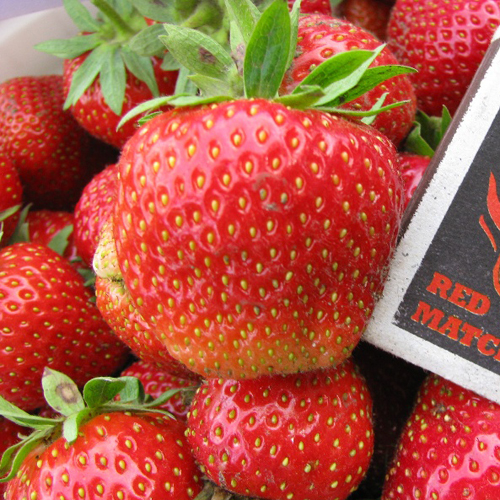
The plant is low, compact, average foliage. Usulation is moderate. The leaf plate is concave, dark green in color. Flowers with well developed anthers. Peduncles are long, tall, strong, not inclined to lay on the ground under the weight of berries. A characteristic feature of the variety is that the berries are very tightly attached to the stalk, they are separated from it with difficulty, often together with the sepal, at the same time they deform, secrete juice and lose their presentation.
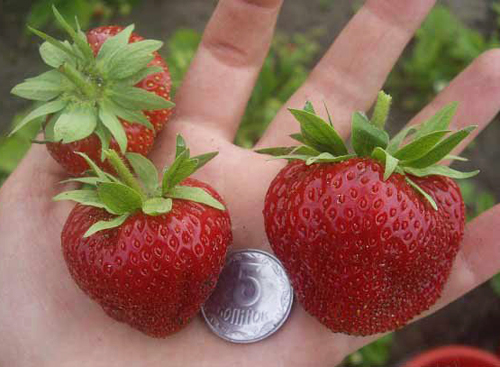
The fruits of the Crown are round-conical or heart-shaped. The skin is bright red; when fully ripe, the berry acquires a dark red hue. The pulp is orange-red, juicy, rather soft, with a fleshy consistency, without a core and voids. The berries have a pronounced strawberry aroma and a wonderful sweet taste with a slightly noticeable delicate sourness. By the way, this strawberry does not lose popularity to a greater extent due to its excellent taste, since in terms of other characteristics it is much inferior to many other varieties.
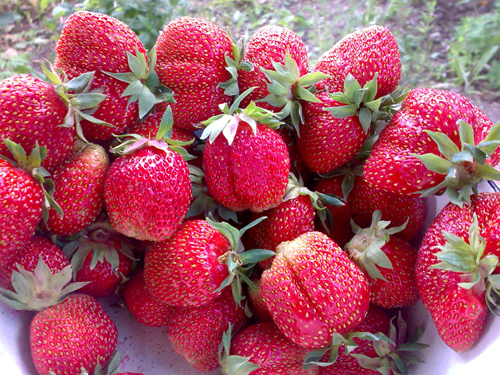
Berries are great fresh, great for making preserves, jams
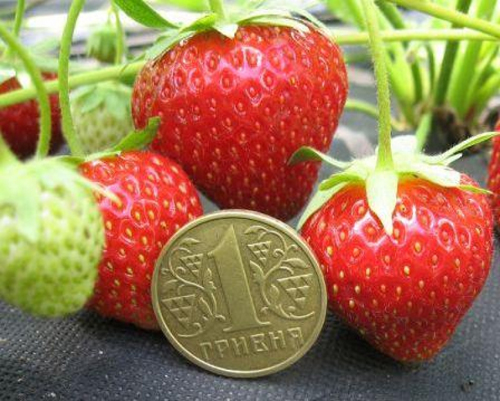
The average weight of berries in the season is 12-15 grams, at the first harvest the fruits are much larger, reaching a weight of 30 grams. Another big drawback of the variety is worth noting right away - its fruiting is extremely unstable. It ripens in the middle or mid-early period, and sometimes almost on a par with the early varieties, depending on the climatic conditions of growth. Fruiting is quite extended, lasts up to a month, and sometimes more, but it is difficult to call it an advantage, and here's why. The fact is that the plants will delight you with large berries only during the first two or three harvests, then only obvious trifles will ripen on the bushes, which you simply do not want to collect. This significant disadvantage of the Crown often makes gardeners think about buying some other strawberry that does not sin with such unstable fruiting.
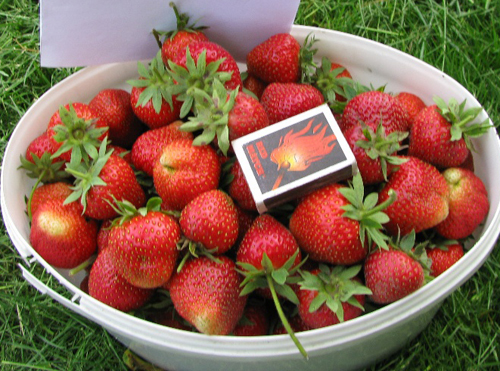
The yield of our heroine cannot be called high, but it is not very low either. On average, 500-900 grams of fruit can be harvested from one plant. About 11 tons of berries can be obtained from a hectare of area, but no more than 15. At present, such indicators are really very ordinary-looking, so it is not advisable to use the variety for commercial cultivation. It should also be noted that this strawberry is not famous for its reliability and is extremely dependent on the weather conditions of the season and the literacy of agricultural technology. But more on that later.
The variety is very unstable to red root rot, white spot, verticillium wilt, powdery mildew.Yes, and to other diseases it is quite susceptible, especially to fungal. Thus, the Corona desperately needs regular, high-quality preventive treatments. And, most likely, you will not do with folk remedies, especially in unfavorable seasons, you will have to use chemicals. This disadvantage also often forces gardeners to think about changing the variety. Our heroine is also not famous for winter hardiness, she requires good shelter in regions with frosty winters, especially with a small amount of snow. On the other hand, in Central Russia, it winters quite well, without attacks, but in the more northern regions it is worth taking care of protecting plants from winter cold. According to gardeners, the frost resistance of the variety is quite good; in the spring, plantings rarely suffer from frost.
Strawberries are thermophilic, but they cannot stand the heat; even the death of plants at very high temperatures is possible, if you do not take care of shading and timely watering. The Crown also cannot boast of drought resistance, and it is extremely painful to endure waterlogging of the soil. These two extremes have a very bad effect not only on the health and productivity of plants, but also on the taste of the berries and their size. In general, it will be difficult to do without drip irrigation. In rainy seasons, this nuance can generally become a big disaster - not only will the taste of the berries deteriorate and they will not please in size, but they can also begin to rot en masse. In addition, in conditions of waterlogging, the likelihood of infection of plants with fungal diseases increases, and, according to the observation of gardeners, this variety, even with high-quality treatments, is still extremely affected, while other varieties on the site feel much better. In a word, our heroine has a difficult relationship with the environment, and therefore she needs painstaking competent care.
In general, there is nothing supernatural in the agricultural technology of the Crown, only the most standard measures are needed, including watering and fertilizing, loosening the soil, weeding weeds and preventive treatments against pests and diseases. Nothing unusual, but all these techniques must be done on time and with high quality if you want to get a good tasty harvest. But despite the fact that our heroine is very capricious, she has several advantages in agrotechnical terms. Firstly, strawberry bushes are quite compact, so they can be grown using compacted technology - they can be planted at a distance of 20 cm from each other. Secondly, the plant does not require an abundant amount of dressings, two or three per season will be enough.
In conclusion, it is worth summing up. The crown is a variety suitable exclusively for cultivation on a personal plot for personal consumption. It was withdrawn a long time ago and is now considered obsolete, and it really is. In terms of its performance, it is noticeably inferior to modern popular varieties. Our heroine has plenty of shortcomings, but she still remains the favorite of many gardeners. Why is that? Probably just because it's delicious.
But with the abundance of a wide variety of strawberries on the market, one big question arises. Is it worth indulging the whims of the old Dutch Crown if the result does not justify the expenditure of time and effort? Maybe you should think about something newer and more interesting? The answer to these questions, of course, is up to you. But we will be honest - this variety is really not particularly outstanding, and if it once was, it has now lost its qualities, which in the distant 80s were considered the limit of strawberry capabilities.








